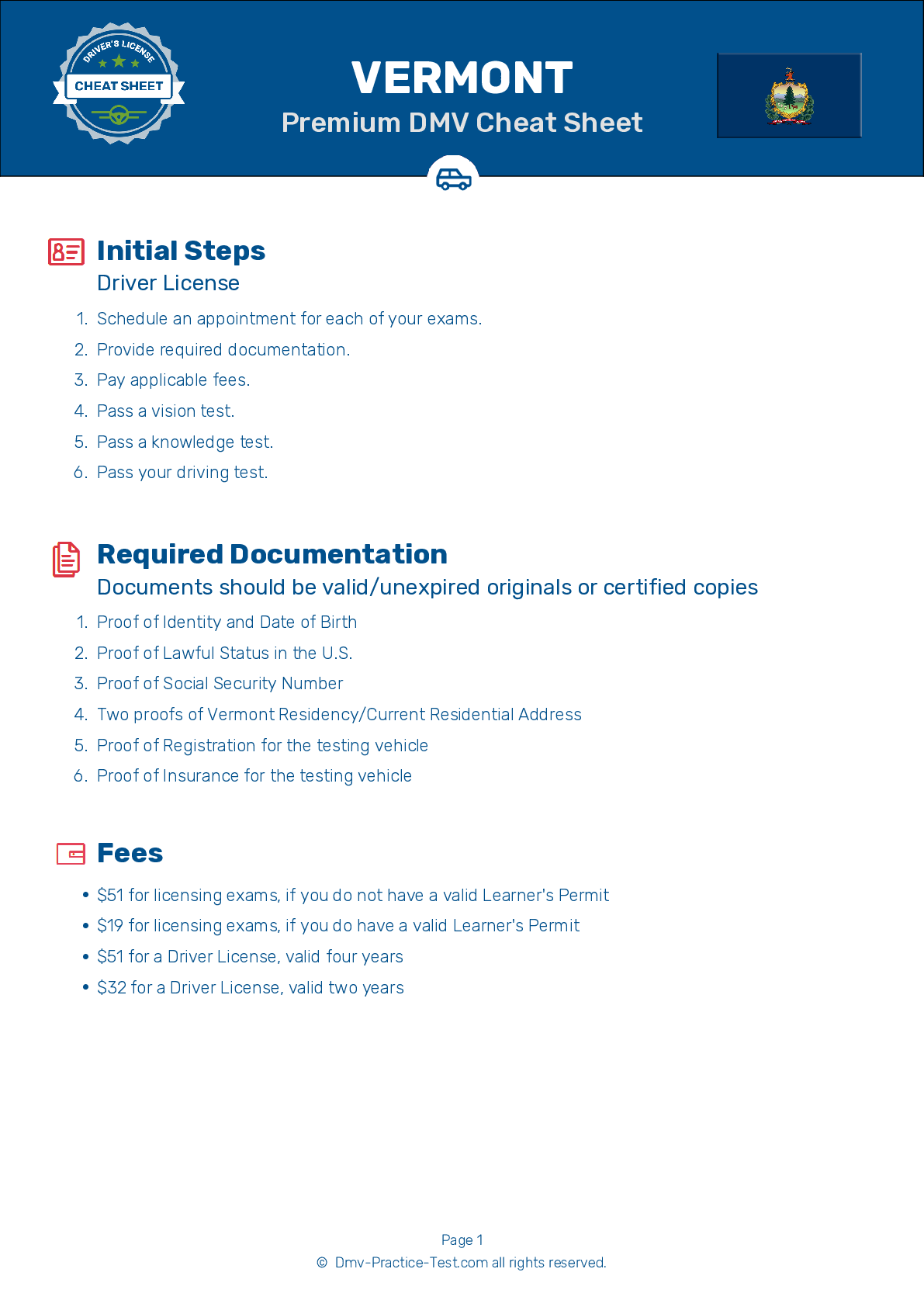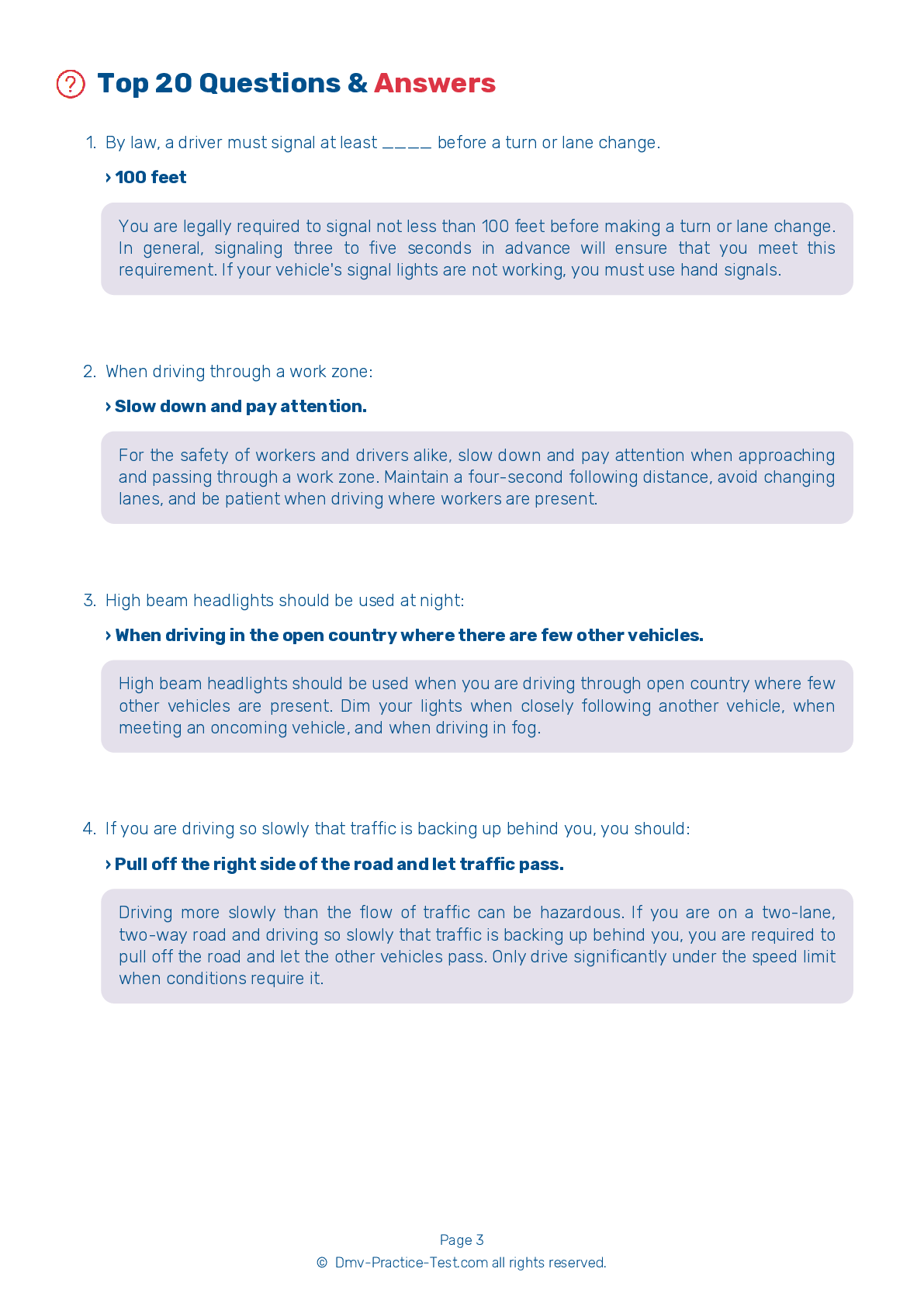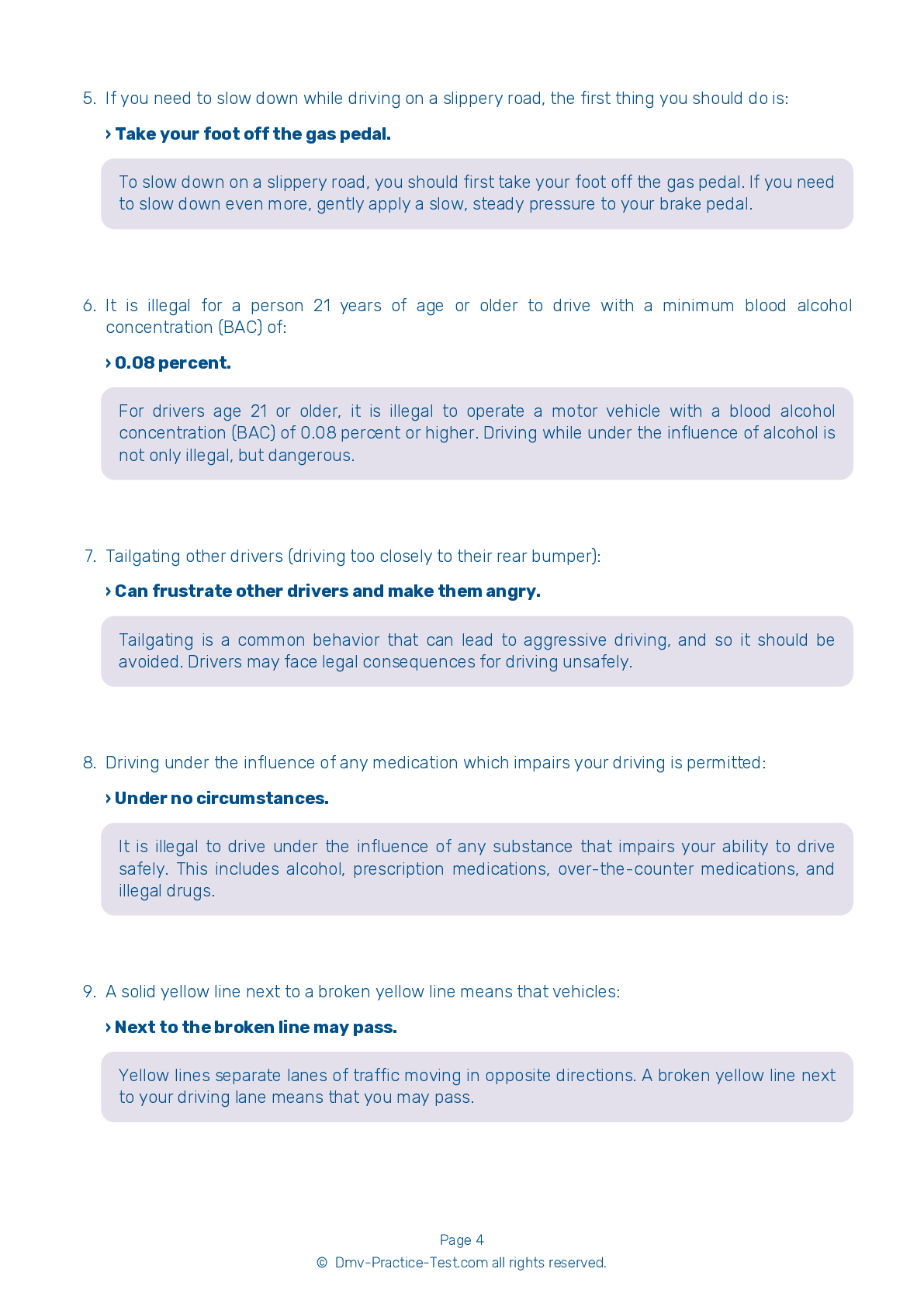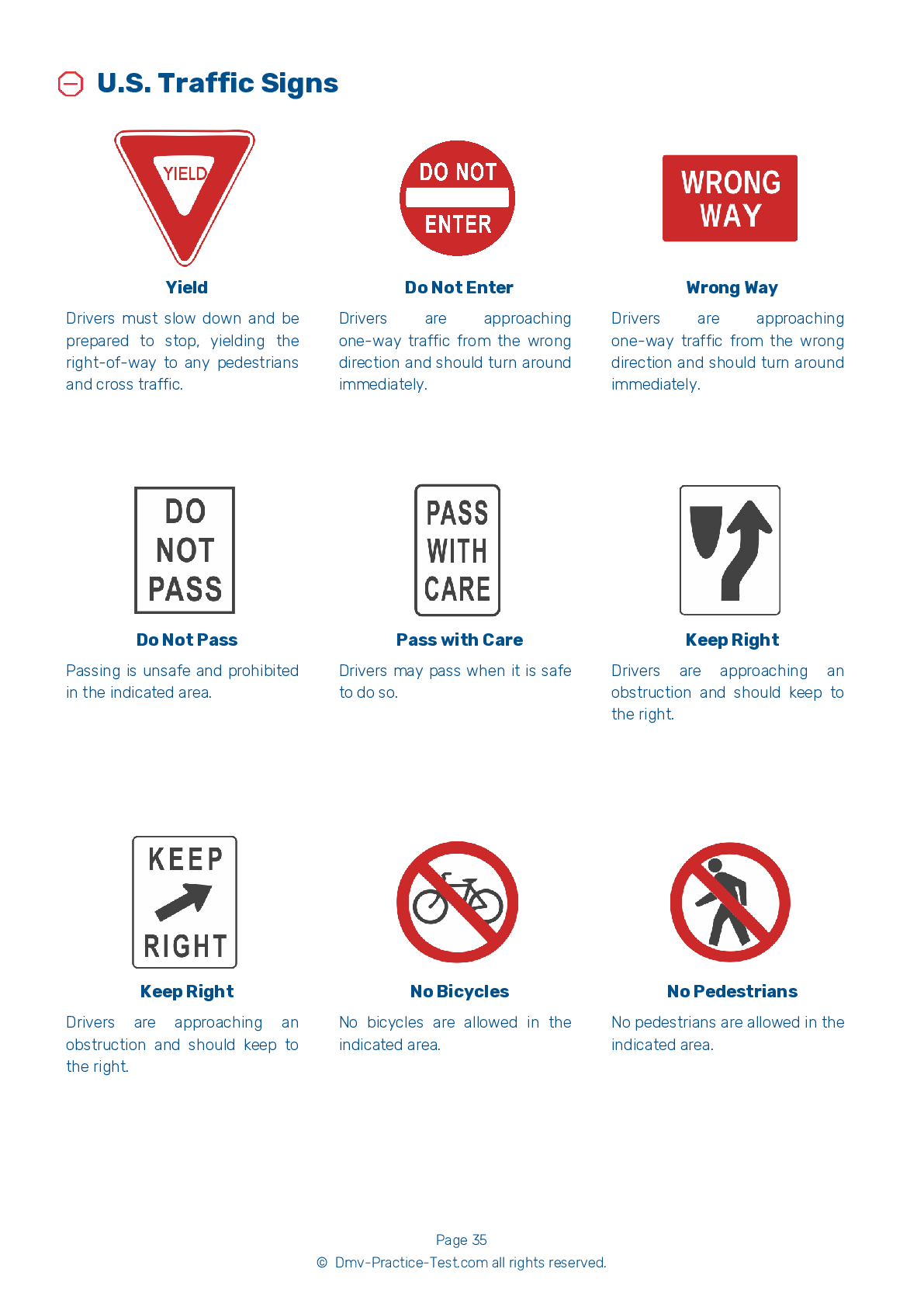FREE Vermont DMV Practice Test #11 Page 2 of 3
The Vermont DMV practise examinations have been updated for January 2025. It includes questions based on the Vermont Driver Handbook's most significant traffic signals and legislation for 2025. Use actual questions that are very similar (often identical!) to the DMV driving permit test and driver's licence exam to study for the DMV driving permit test and driver's licence exam.
On the practise exam, each question gets a tip and explanation to help you remember the concepts. The written component of the official Vermont DMV test will include questions about traffic rules, traffic signs, and driving statutes, as well as knowledge from the Driver Handbook.
To obtain a passing grade, you must correctly answer 16 of the 20 questions. Use the practise exam provided by the Vermont Department of Motor Vehicles to help you prepare for your instruction permit or driver's licence.
The DMV exam is available in several languages.
Using any kind of testing assistance will result in an automatic fail, and the DMV may take additional action against your driver's licence, so stay away from it.
7 . While backing, you should:
When intending to back up, always check behind your vehicle before getting in. Children and small objects are difficult to see from the driver’s seat. While backing, turn your head so you can see through the rear window. Do not depend only on your mirrors or sensors.
8 . If you’re going to turn left onto a one-way street, you should complete the turn into:
You should always turn from the lane that is closest to the direction you want to go. Turn into the lane closest to your previous lane.
9 . A broken yellow line alongside a solid yellow line means:
A broken yellow line alongside a solid yellow line means that passing is allowed from the lane on the side next to the broken line.
10 . A driver approaching a green traffic light:
When turning left at a green traffic light, you must yield the right-of-way to oncoming traffic. You may proceed when the way is clear.
11 . It is best to keep a space cushion:
To ensure that you will have time to react to hazards on the roadway, it is best to keep a cushion of space on all sides of your vehicle. Do not crowd vehicles to your left and right sides.
12 . Your vehicle strikes an unattended parked vehicle and you cannot locate the vehicle’s owner. You:
Upon striking an unattended vehicle, stop and try to locate the owner. If you cannot find the owner, leave a written notice containing your name, your address, and the circumstances of the accident.
13 . When entering a highway from an entrance ramp, you should generally:
Entrance ramps for highways often have acceleration lanes. When merging with traffic from an acceleration lane, you should put your signal on, look for an opening in traffic, accelerate up to the speed of traffic, and merge into an opening in traffic.
Need Car Insurance? No problem!
Compare the best rates in Vermont and find a personalized policy that meets your needs.
1. Are You Currently insured ?
2. Married ?
3. Do you own your Home?
4. Do you have more than 1 car ?
5. Have you or a Family Member Honorably Served in U.S. Military ?
6. Your Name
7. Age
8. Zip code
IMPORTANT REMINDER:Auto Insurance is Mandatory to drive in Vermont. Get covered before you hit the road to avoid any fines.
Ranked by best match
2025 Vermont | Frequently Asked Questions
1. Not checking mirrors and blind spots before changing lanes or turning.
2. Speeding or driving too slowly for the conditions or posted speed limit.
3. Not coming to a complete stop at stop signs or red lights.
4. Incorrect signalling or not signalling at all.
5. Poor parking, especially parallel parking.
Remember, practice makes perfect, so take time to hone your skills.



